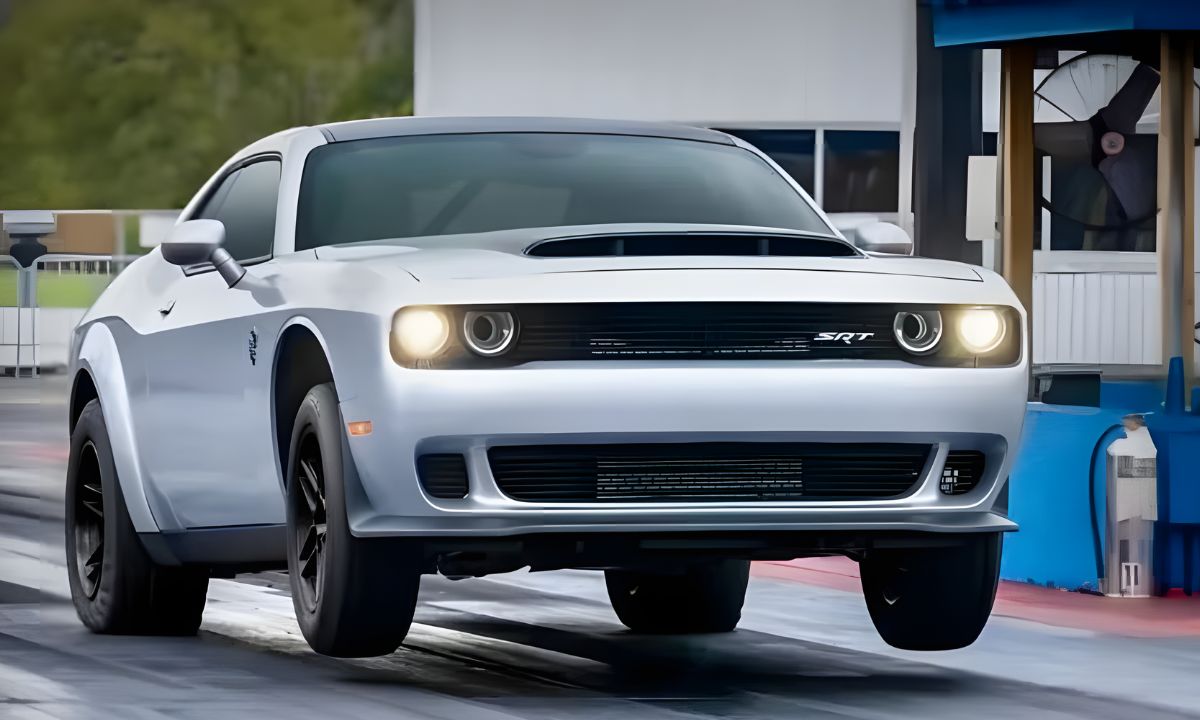The automotive world witnessed a significant development as Stellantis officially revived its legendary Street and Racing Technology (SRT) division in July 2025. This move represents more than just a corporate restructuring; it signals a renewed commitment to high-performance engineering across American automotive brands.
The Return of a Performance Icon
Hellcat Godfather and Ram CEO Kuniskis tapped to lead revival of Stellantis’ legendary SRT division, which will be responsible for high performance vehicle development, aftermarket parts and tuning programs, and motorsports teams. Tim Kuniskis, who previously led Dodge through its most aggressive performance era, now oversees this revitalized division while maintaining his role as Ram CEO.
Tim Kuniskis, who as boss of Dodge pushed the brand to make crazy machines like the Challenger SRT Demon 170, will oversee SRT as well as Chrysler, Dodge, and Jeep. This appointment brings experienced leadership to a division that historically pushed boundaries in American performance engineering.
Multi-Brand Performance Integration
The revived SRT division operates differently from its predecessor. Stellantis says reviving SRT is “a bold step in unifying high-performance engineering across Chrysler, Dodge, Jeep, and Ram under a single, dedicated identity.” This unified approach promises coordinated development across all American brands under the Stellantis umbrella.
And it’s not just Dodge. Kuniskis said that SRT performance will work across all of Stellantis’s American brands—Chrysler, Jeep, and Ram included. That means we could theoretically see a new Grand Cherokee SRT, or the return of the 300 SRT. This cross-brand strategy opens possibilities for performance variants that haven’t existed in years.
Motorsports and Direct Connection Integration
The new SRT structure encompasses more than just vehicle development. According to Stellantis, “the newly reestablished SRT performance division will oversee Direct Connection and North American motorsports initiatives under Chrysler, Dodge, Jeep and Ram, including participation in the NHRA and Ram’s recently announced plans to return to the NASCAR Truck Series in 2026. This integration connects track performance with street-legal applications.
Direct Connection, Stellantis’ performance parts and tuning program, becomes a key component of the revived division. This relationship ensures that aftermarket performance modifications align with factory engineering standards while maintaining warranty coverage for approved modifications.
The V8 Question: Performance Engine Future
The revival coincides with renewed interest in traditional powertrains. The recent announcement of Hemi V8 engine production restarting in August 2025, including the 6.2L Hellcat and 6.4L Apache V8s, strongly suggests that future SRT models will once again focus on brute power, high-speed capability, and mechanical drama—hallmarks of the Hellcat era.
This development addresses concerns about the fate of V8 engines in an increasingly electrified automotive landscape. The continuation of Hellcat V8 production indicates that SRT’s performance philosophy remains rooted in displacement and forced induction, at least for the immediate future.
Strategic Positioning and Market Response
The timing of SRT’s revival reflects broader market dynamics. Performance enthusiasts have expressed concerns about the shift toward electrification potentially diminishing the visceral experience of high-performance vehicles. By reviving SRT with its traditional performance focus, Stellantis acknowledges this market segment’s preferences while positioning itself for future performance developments.
The division’s structure allows for both traditional and alternative performance approaches. While V8 engines continue production, the unified engineering approach creates opportunities for hybrid and electric performance applications that maintain SRT’s performance benchmarks.
Manufacturing and Development Implications
The revival extends beyond marketing to actual manufacturing changes. Ram’s return to V8 production for the 1500 series demonstrates concrete commitment to traditional performance powertrains. This production resumption provides the foundation for expanded SRT applications across multiple vehicle platforms.
Engineering resources previously scattered across individual brands now consolidate under SRT leadership. This consolidation potentially accelerates development timelines and ensures consistent performance standards across all SRT-badged vehicles.
Industry Impact and Competition
SRT’s revival occurs amid increased competition in the American performance market. Ford’s continued investment in Mustang and F-150 performance variants, along with General Motors’ expanding performance portfolio, creates a competitive environment where specialized performance divisions become increasingly important.
The revived SRT division positions Stellantis to compete more effectively in this market segment. By centralizing performance engineering under experienced leadership, the company can respond more quickly to market demands and competitive pressures.
While official announcements remain limited, the revival structure suggests expanded SRT applications. The Jeep Grand Cherokee SRT, discontinued in recent years, represents one potential return. Similarly, the Chrysler 300 SRT could benefit from renewed performance focus, though platform considerations may influence specific applications.
Ram’s SRT applications extend beyond traditional truck performance. The upcoming NASCAR Truck Series participation suggests performance variants that translate racing development to consumer applications, potentially expanding SRT’s presence in the commercial vehicle segment.
Frequently Asked Questions
Q: When will the first new SRT models appear under the revived division? A: Stellantis hasn’t announced specific timelines for new SRT models, but the division’s revival in July 2025 suggests development work is already underway. Given typical automotive development cycles, new SRT applications could appear within 12-18 months.
Q: Will the revived SRT division focus exclusively on V8 engines? A: While V8 production continues through August 2025 and beyond, the unified engineering approach allows for diverse powertrain applications. SRT’s performance mandate doesn’t restrict specific engine types, though V8 engines remain central to the current strategy.
Q: How does the new SRT structure differ from the original division? A: The revived SRT operates across all American Stellantis brands rather than focusing primarily on Dodge. This broader scope includes Direct Connection aftermarket programs and motorsports initiatives, creating a more comprehensive performance ecosystem.
Q: Which vehicles are most likely to receive SRT treatment under the new structure? A: While unconfirmed, the Jeep Grand Cherokee, Chrysler 300, and various Ram applications represent strong candidates. The cross-brand approach opens possibilities for SRT variants that weren’t previously considered under the original division structure.
Also read: 641bhp Hyundai Ioniq 6 N: Electric Super-Saloon with Paddle Shift Gearbox – Westendmechanical
